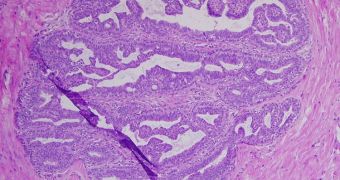The case that tumors contain stem cells is getting larger and larger, experts say. For years, oncologists have believed that tumors were made up of a mass of similar cells, but new data are beginning to indicate that this is not the case.
If the existence of cancer stem cells – long since a subject of debate in the international scientific community – is confirmed, then scientists may finally explain how and why so many cancers relapse.
Thus far, tantalizing clues pointing towards the existence of such stem cells have been discovered in brain, skin and colon cancers. However, if the trend holds, then most types of cancer should display such populations of resilient “seed” cells.
What they do is allow tumors to regrow, after chemotherapy and radiotherapy destroys most of the cancer. Thus far, the explanation for this has been that some cancer cells are always left behind. Recent investigations suggest that stem cells can endure even when all other cancerous cells die.
If the proposal turns out to be true, then it could shed some light on a very mysterious set of conditions, collectively known as cancer. Data on the exact origins of the disorder are very scarce, and knowledge levels on different types of cancer vary considerably.
Like all stem cells, the ones that underlie cancer allow the tumors to renew themselves, as well as the formation of multiple types of cancerous cells from a single bath of progenitor cells, Technology Review reports.
The main topic of debate in the scientific community is whether cancer stem cells exist inside tumors. On August 1, a batch of three studies that demonstrate this to be the case was published. However, these papers are unlikely to put an end to the long-lasting debate.
“Cancer stem cells might explain why certain tumors might come back after treatment. You can imagine if you get rid of the whole tumor except for one cancer stem cell, then the cancer stem cell fuels a new tumor, and you get back to original scenario,” Hugo Snippert explains.
The expert, an author on one of three new studies, holds an appointment as a cancer biologist at the University Medical Center Utrecht, in the Netherlands.
The new papers “offer varying degrees of support that in at least certain kinds of tumors, there really are subpopulations of tumor cells that are responsible for tumor growth,” comments University of Texas Southwestern Medical Center stem-cell biologist, Sean Morrison.
“The important question for the field is what fraction of cancers fall into each: is it really only a minority of malignancies that follow the cancer stem cell model, or are there many malignancies that follow the model? Nobody knows,” concludes the scientist, who was not a part of the research teams.

 14 DAY TRIAL //
14 DAY TRIAL //